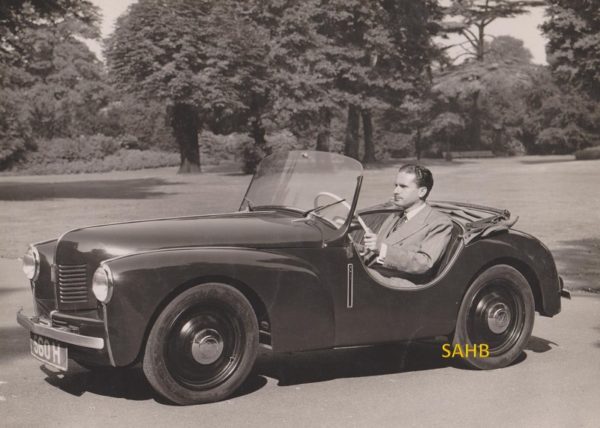
This Snapshot unveils three stories – of a company, a car and a man.
In 1907, two brothers – Gaston and Jules Chausson – set up their boiler-making company in Asnières-sur-Seine. They specialised in building radiators for the growing French motor industry; their early customers included Corre, Panhard, Berliet, Mors and Clément. During the First World War they turned production over to radiators for aircraft, and equipped 80% of all allied water-cooled machines. Between the two wars they grew into a major group, moving into metal stamping – making bodies for numerous car manufacturers. They also took over the Swiss radiator manufacturer Gallay, and in 1936 acquired the bankrupt French carmaker Chenard & Walcker.
During World War II Chausson’s manufacturing plant was requisitioned by the German army – but around 1942 they set up a secret design office to develop a prototype microcar named the CHS. At least one prototype was built – No. 0001 – and it is here in our Snapshot. This open 2-seater with no doors was powered by a 330cc two-stroke engine driving the front wheels. It had independent suspension all round. It is said that there was a second prototype with a 550cc twin that was used in a Chenard & Walcker forward-control van. Shortage of materials after the war made it impossible to convert prototype 0001 into a production vehicle. If it had been built, it is likely that it would have been badged as a Chenard & Walcker.
After the war, Chausson focused firstly on the design and manufacture of buses and coaches; in the 1950s they supplied hundreds of buses to the Parisian public transport operation RATP. With increasing shareholding by Peugeot and Renault, they also moved heavily into subcontract manufacture of bodies for cars and light commercial vehicles, such as Panhard PL17 and Renault Dauphine cars and vans that included the Peugeot J7, Citroën C35 and Renault 4 Fourgonette. The company lasted until 2000.
But what happened to the CHS prototype? Enter Tom Delaney. His father’s business was Delaney-Gallay, founded in 1911 as radiator manufacturers. They were the British sister company of the original Gallay company that eventually became part of Chausson. Delaney took over his father’s company and greatly expanded it. Delaney father and son were both motor racing enthusiasts. The father took part in the 1903 Paris-Madrid race, and after World War I became managing director of Lea Francis. In 1928 the young Tom accompanied the team’s cars to Brooklands and later joined the team in Ireland for the TT. Tom eventually acquired Kaye Don’s winning Lea Francis Hyper, which he raced for many years. He competed in his last race at Silverstone in April 2006 at the age of 95, at which time he was the world’s oldest person with a racing licence. He died in September of the same year.
With the evident link to Chausson and a passion for motorcars and motor sport, it is not surprising that Tom Delaney went to France just after World War II to look at the CHS prototype. He brought it back to Britain with the idea of putting it into production here. Our Snapshot shows Delaney in the car. Sadly, production plans came to nothing, and the car languished in a garage until 2000 when he gave it to a friend. Unearthed in 2012, it was bought at auction by Christophe Chausson, the grandson of one of the two founders. It was shown, partially restored, at Rétromobile in 2017.
Photo courtesy of Guy Loveridge.







Leave a Comment